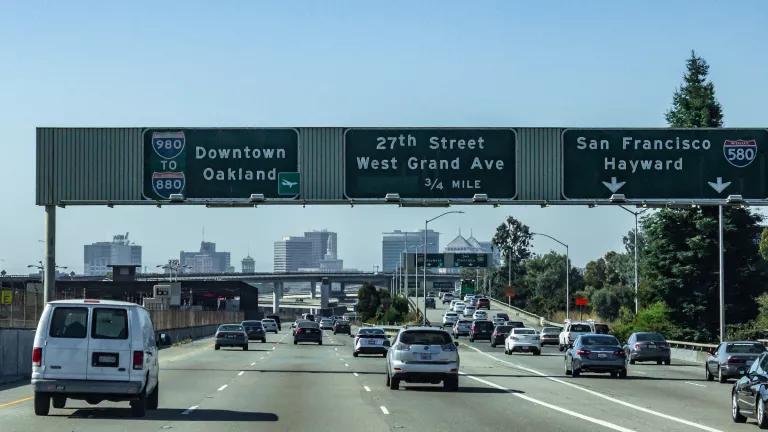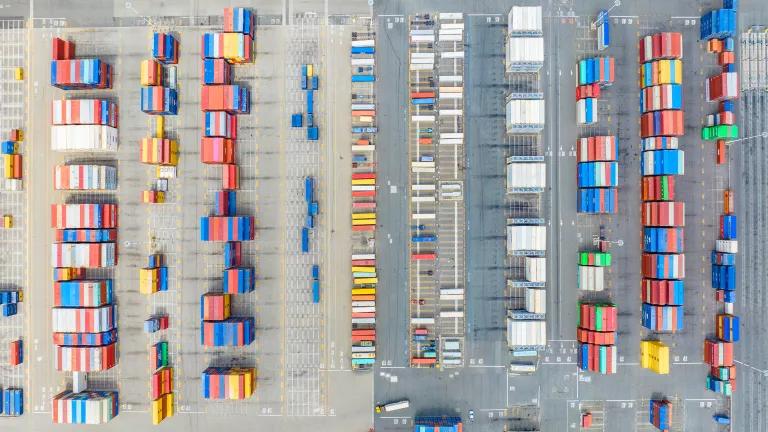A couple weeks ago, the State of California released the first of three installments describing its new draft Bay Delta Conservation Plan (BDCP) for restoring the Bay-Delta estuary. The second installment is scheduled for release this week, with the final batch due the week of April 22nd. This plan has been many years in the making, and must meet several important benchmarks. One of these benchmarks was imposed by the State Legislature in the Delta Reform Act of 2009, which states that: “The policy of the State of California is to reduce reliance on the Delta in meeting California’s future water supply needs through a statewide strategy of investing in improved regional supplies, conservation, and water use efficiency.” This directive recognizes that we need to take less water out of the Bay-Delta in order to restore the estuary and the fishing and farming communities that rely on it, as well as the 25 million Californians who get some portion of their water supply from the Delta. The Legislature recognized that the State can manage reduced reliance by investing in sustainable regional water supply options like expanded water recycling and conservation. The portfolio alternative being advanced by NRDC and others is designed to implement this approach in the BDCP process.
Whether the new BDCP meets the test of reduced reliance is not hard to determine. As the Deputy Director of the Natural Resources Agency stated this past week, “the average amount of water we move through the Delta in a typical year is 4.8 million acre feet (though it varies by year).” So BDCP needs to take less water than 4.8 million acre feet, on average, in order to meet the State’s policy to reduce reliance on the Delta. The State Water Board, Delta Vision Strategic Plan, Public Policy Institute of California, independent scientists and many others have already recognized that failing to reduce exports and increase flows through the Delta as compared to today, at least until native fish recover, will simply not do the job of restoring the Delta.
But, inexplicably, in the documents released by the State on March 14, 2013, was this “Q&A”:
Is this project about getting more water from the Delta? How much water will be exported? No. BDCP is about water reliability and habitat restoration. During the last 20 years, we have exported an average of 5.3 million acre feet (MAF). The modeling for this project shows a potential average export ranging between 4.8 MAF to 5.6 MAF, but this could be refined as more modeling is completed.
Future Delta exports in the range of 4.8 MAF to 5.6 MAF do not reduce reliance from a level of 4.8 MAF today. And there’s no dispute about the level of today’s exports – that 4.8 MAF number comes from the Resources Agency. So the answer to the bolded question is actually “yes.” The new draft plan does not include reduced exports in the range of possible outcomes, despite overwhelming scientific information demonstrating the need for increased flows to restore the Delta. Instead, the plan intends to take more water from the Delta and increase reliance on the Delta as compared to today, contrary to the stated policy of California and the Legislature’s directive in the 2009 Delta Reform Act.
In claiming that the new BDCP is not about “getting more water from the Delta,” the State seems to be asserting that the lower end of the anticipated export range falls below the 5.3 MAF average level of exports that the State calculates for the last 20 years. But what’s the rationale for using the last 20 years, as opposed to the export levels that were in effect in 2009, when the Legislature passed its edict to reduce reliance, and that continue to be in effect today? The last 20 years include the period of the Delta’s demise – a time of historically high water exports that coincided with the utter environmental collapse of the ecosystem. There is no question that we need to improve flows dramatically from that 20-year baseline, a job that the Delta biological opinions had already begun by the time the Legislature passed the 2009 Delta Reform Act. But those biological opinions are stopgap measures, designed to keep our native species from going extinct while a longer-term recovery plan is developed. BDCP is supposed to be that long-term recovery plan, which means it must devote more flow to help fish recover than we do today.
Our colleagues at the Nature Conservancy recently penned an eloquent op-ed explaining that “A successful BDCP cannot be about exporting more water from the Delta. We recognize the need to reduce reliance on the Delta as a water supply source, and that is the intent of California’s 2009 water reforms.” It’s time for the State to develop a BDCP that satisfies this fundamental requirement. Our portfolio alternative offers one viable approach. No doubt there are many other viable options out there. It’s not too late for the State to take a serious look at these other alternatives – it simply needs to commit to doing so.
Update
Shortly after this blog was posted, the Deputy Director of the Natural Resources Agency revised his blog to remove the reference cited above that exports from the Delta in recent years have averaged 4.8 million acre-feet. Interestingly, Mr. Stapler did not refute the 4.8 MAF delivery amount that he himself had previously asserted, nor could he, since it is a widely accepted number. Here, for example, is a link to a Santa Clara Valley Water District report explaining that "Since 2006, additional Delta pumping constraints have been implemented in response to declines in fish populations, and the projected long-term average water deliveries [from the Delta] have been reduced to 4.7 million acre-feet per year" (from page 4 of 7).
The response of the Natural Resources Agency is disappointing, to say the least. We will not solve the crisis in the Delta by hiding and muddying the facts to suit the argument of the day. Instead, we need an open and honest analysis of the choices facing Californians, and the associated costs, benefits, and tradeoffs. If Mr. Stapler's approach is any example, it's going to be an uphill battle to get it.



